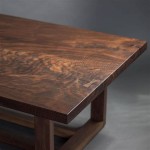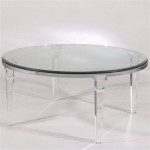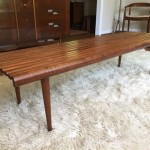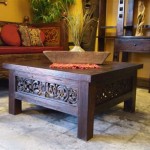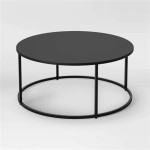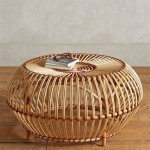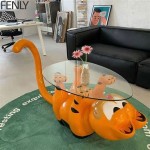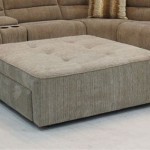Types of Tables in a Café
The selection of tables in a café significantly impacts the overall ambiance, functionality, and customer experience. Tables are not merely functional surfaces; they contribute to the aesthetic appeal, influence customer seating arrangements, and ultimately affect the café's operational efficiency. Choosing the right types of tables involves consideration of various factors including available space, target clientele, desired style, and budget. This article explores the diverse range of table options available to café owners, outlining their characteristics, advantages, and suitability for differing café environments.
Understanding the Importance of Table Selection
Table selection is a critical component of café design and operational planning. The tables chosen must harmonize with the overall décor while simultaneously providing a comfortable and practical surface for customers to enjoy their food and beverages. A well-considered table selection strategy can optimize seating capacity, enhance customer flow, and contribute to a positive and memorable dining experience. Conversely, inappropriate table choices can lead to customer dissatisfaction, inefficient space utilization, and ultimately, a negative impact on the café's profitability.
Factors to consider when selecting café tables extend beyond mere aesthetics. Durability, ease of cleaning, and resistance to wear and tear are paramount, especially in a high-traffic environment. The table's size and shape should be appropriate for the type of service offered at the café. For example, a café that specializes in large portions or shared plates will require larger tables, while a café primarily serving coffee and pastries may opt for smaller, more intimate seating arrangements. Accessibility for customers with disabilities is another crucial aspect that should inform table selection.
Classifying Café Tables by Shape and Size
The shape and size of café tables profoundly influence the layout and functionality of the space. Different shapes can accommodate varying numbers of customers and contribute to distinct seating arrangements. The primary table shapes used in cafés include round, square, rectangular, and custom shapes.
Round Tables: Round tables foster a sense of intimacy and encourage conversation. They are well-suited for smaller groups of two to four people. The lack of corners allows for easier movement around the table, making them a practical choice for maximizing space in compact cafés. Round tables are often utilized in more relaxed and informal settings, promoting a social atmosphere.
Square Tables: Square tables offer a clean and modern aesthetic. They are versatile and can be easily arranged in various configurations. Square tables are often used as individual seating options or can be combined to accommodate larger groups. They provide a sense of personal space and are suitable for customers who prefer a more structured seating arrangement. The symmetrical design of square tables adds a touch of sophistication to the café interior.
Rectangular Tables: Rectangular tables are ideal for accommodating larger groups or providing communal seating. They are well-suited for cafés that cater to families or offer co-working spaces. Rectangular tables can be arranged along walls or in the center of the café to maximize seating capacity. They are also a practical choice for placing food displays or providing a service area for customers.
Custom Shapes: Custom-shaped tables allow for unique design expressions and can be tailored to the specific needs of the café. They can be used to create visually interesting seating arrangements and optimize space utilization in unconventional layouts. Custom shapes may include oval, triangular, or organically shaped tables, providing a distinctive and memorable dining experience. However, custom tables often come with a higher price point and may require specialized manufacturing.
The size of the table is equally important. A standard table for two people typically measures around 30 inches in diameter or width, while a table for four people may range from 36 to 48 inches. Larger tables designed for communal seating can extend beyond 72 inches in length. Careful consideration should be given to the available floor space and the desired density of seating when determining the appropriate table size.
Material Considerations for Café Tables
The material used in the construction of café tables plays a significant role in their durability, aesthetics, and maintenance requirements. Common table materials include wood, metal, laminate, stone, and glass. Each material offers unique characteristics and benefits.
Wood Tables: Wood tables are a classic and versatile choice for cafés. They offer a warm and inviting aesthetic and can be easily customized to match various decorating styles. Wood tables can be made from a variety of wood species, each with its own unique grain pattern and color. Hardwoods such as oak, maple, and walnut are durable and resistant to wear and tear, while softwoods such as pine and cedar are more affordable but require more frequent maintenance. Wood tables require regular cleaning and sealing to protect them from moisture and stains.
Metal Tables: Metal tables are known for their durability and resistance to damage. They are a practical choice for high-traffic areas and outdoor seating. Metal tables can be made from steel, aluminum, or iron. Steel tables are strong and sturdy, while aluminum tables are lightweight and rust-resistant. Iron tables offer a rustic and industrial aesthetic. Metal tables are typically easy to clean and maintain, but can be prone to scratching if not properly cared for.
Laminate Tables: Laminate tables are an affordable and versatile option for cafés. They consist of a thin layer of decorative laminate bonded to a core material such as particleboard or MDF. Laminate tables are available in a wide range of colors, patterns, and textures, allowing for easy customization to match the café's decor. They are also relatively easy to clean and maintain. However, laminate tables are less durable than wood or metal tables and can be prone to chipping and scratching.
Stone Tables: Stone tables offer a luxurious and elegant aesthetic. They are made from natural stone materials such as granite, marble, or slate. Stone tables are extremely durable and resistant to heat, stains, and scratches. They are also easy to clean and maintain. However, stone tables are heavy and expensive, making them a less practical choice for some cafés. They are often used as accent pieces or in high-end establishments.
Glass Tables: Glass tables offer a modern and minimalist aesthetic. They can create a sense of openness and light in the café. Glass tables are easy to clean but can be prone to scratching and shattering if not properly handled. Tempered glass is a safer option for café tables as it is more resistant to breakage. Glass tables are often paired with metal or wood frames to provide stability and support.
Table Base Styles and Stability
The table base is a crucial component of the table's overall stability and design. Different base styles offer varying levels of support and visual appeal. The primary table base styles include pedestal bases, four-leg bases, and trestle bases.
Pedestal Bases: Pedestal bases consist of a single central support column. They offer a clean and minimalist aesthetic and allow for ample legroom. Pedestal bases are particularly well-suited for round and square tables. They can be made from metal, wood, or concrete. The stability of a pedestal base depends on the size and weight of the base, as well as the size and weight of the table top. It is important to choose a pedestal base that is appropriately sized for the table top to prevent wobbling.
Four-Leg Bases: Four-leg bases provide a stable and traditional look. They consist of four legs that are typically made from metal or wood. Four-leg bases are suitable for a wide range of table shapes and sizes. They offer a reliable and sturdy support system. The leg design can vary from simple and straight to more ornate and decorative. The spacing and angle of the legs influence the table's stability. Wider spacing between the legs generally provides greater stability.
Trestle Bases: Trestle bases consist of two or more supports connected by a horizontal beam. They offer a rustic and industrial aesthetic. Trestle bases are commonly used for rectangular and long tables. They provide a strong and stable support system. The trestle design allows for ample legroom and can accommodate multiple seating arrangements. Trestle bases are often made from metal or wood and can be customized to match the café's decor.
Beyond the base style, the material and construction of the base contribute significantly to stability. Metal bases, especially those made from steel or cast iron, are generally more stable than wood bases. However, well-constructed wood bases can also provide adequate support. The base should be securely attached to the table top using screws, bolts, or other appropriate fasteners. Regular inspection and maintenance of the base are essential to ensure its continued stability.
In conclusion, careful consideration of shape, size, material, and base style will ensure that the selected tables not only enhance the aesthetic appeal of the café but also contribute to a functional and enjoyable dining experience for customers.
59466501-299e-45da-bc7d-e5a971e8324b.webp?strip=all)
Hospitality Table Size Guide

Restaurant Tables Guide Materials Durability Aesthetics

Types Of Tables Used In Restaurants And Cafes Jd Institute Fashion Technology

Restaurant Seating Capacity Guide Tips And Guides

Types Of Restaurant Tables Table Tops

Restaurant Tables Guide Materials Durability Aesthetics

Steel Stand Cafeteria Table At 5850 Piece Cafe Tables In New Delhi Id 3939712497

Types Of Tables Used In Restaurants And Cafes Jd Institute Fashion Technology

7 Types Of Restaurant Table Set Up That Will Wow Your Guests

Restaurant Furniture Tables Chairs Bar More
Related Posts

